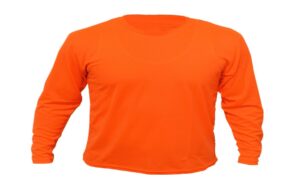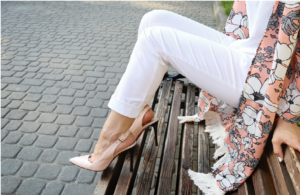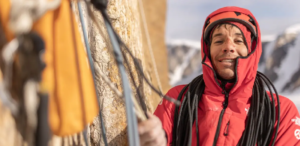
Sewing classes have evolved from traditional home economics staples to vibrant learning hubs for fashion enthusiasts.
These classes cater to a diverse audience, ranging from complete novices eager to thread their first needle to seasoned sewists honing their craft.
The appeal lies not just in learning to sew but in understanding the intricacies of garment construction and design.
Whether you aspire to design a couture gown or simply hem your own trousers, sewing classes offer a pathway to creative expression and practical skill development.
Participants often discover a newfound appreciation for the craftsmanship behind clothing, from selecting fabrics that complement their designs to mastering techniques that elevate their sewing prowess.
Benefits of Learning to Sew
1. Creativity Unleashed
Sewing classes for beginners unleash creativity by encouraging experimentation with fabrics, colors, and designs. Participants learn to translate their ideas into tangible garments, fostering a sense of accomplishment and pride in their creations.
Having access to this creative outlet gives individuals the opportunity to explore their artistic ability and express their own preferences in terms of style in a setting that is encouraging.
Sewing encourages creativity and individual expression, whether it is through the creation of a straightforward skirt or via the embellishment of a jacket with elaborate embroidery.
2. Customization and Fit
One of the most significant advantages of sewing your own clothes is customization. Unlike off-the-rack garments, handmade pieces can be tailored to fit individual body shapes and preferences, ensuring comfort and style without compromise.
Sewing classes provide participants with the skills to alter patterns and adjust measurements, resulting in garments that flatter their unique physique.
This ability to create bespoke clothing enhances self-confidence and promotes a positive body image, as individuals embrace clothing that fits flawlessly and reflects their personal aesthetic.
3. Sustainable Practices
In an era increasingly concerned with environmental impact, skillsfuture sewing courses promotes sustainability by reducing reliance on mass-produced fashion.
By creating garments that are made to last, sewing enthusiasts contribute to a more sustainable and ethical fashion ecosystem.
In sewing classes, students are taught the significance of selecting high-quality fabrics and utilizing construction methods that allow for the greatest possible durability.
This emphasis on lifespan promotes thoughtful consumption habits and minimizes the amount of waste produced by textiles, which is in line with global initiatives to reduce the negative impact that the fashion industry has on the environment.
4. Skill Development
Sewing classes are a gateway to developing valuable skills that extend beyond the sewing machine. From pattern drafting to garment assembly, participants hone their problem-solving abilities and attention to detail, skills that are applicable across various aspects of life.
Learning to sew requires patience and perseverance, as individuals navigate the intricacies of sewing techniques and troubleshoot potential challenges.
These skills translate into improved dexterity, spatial reasoning, and time management, fostering a sense of accomplishment and self-sufficiency.
5. Community and Support
Joining sewing courses near me often means becoming part of a supportive community of like-minded individuals. Whether in-person or online, these communities provide encouragement, advice, and inspiration, fostering friendships and collaborations that enrich the sewing experience.
Participants share insights, exchange tips, and celebrate each other’s successes, creating a nurturing environment where creativity thrives. This sense of camaraderie extends beyond the classroom, as sewing enthusiasts connect through social media groups, workshops, and local meet-ups, forming lasting bonds centered on a shared passion for sewing and fashion.
Types of Sewing Classes
1. Beginner Classes
Designed for those new to sewing, beginner classes cover essential skills such as operating a sewing machine, understanding patterns, and basic garment construction.
These classes lay the foundation for further exploration and skill development, providing hands-on experience under the guidance of experienced instructors.
Participants learn the fundamentals of sewing terminology, equipment maintenance, and fabric selection, gaining confidence with each completed project.
Beginner classes often incorporate simple sewing projects, such as tote bags or pillow covers, to reinforce foundational skills and introduce participants to various sewing techniques.
2. Advanced Techniques
Advanced sewing classes singapore delve into complex techniques such as couture sewing, intricate embellishments, and specialty garment construction.
These classes are ideal for sewists looking to refine their skills and tackle more challenging projects. Participants explore advanced sewing methods, including draping, fabric manipulation, and hand-sewing techniques, under the mentorship of industry professionals.
Advanced classes may focus on specific garment types, such as evening wear or tailored suits, allowing participants to expand their repertoire and enhance their craftsmanship.
3. Specialty Workshops
From quilting to embroidery, specialty workshops cater to specific interests within the realm of sewing. These classes offer opportunities to explore new techniques and applications, adding depth and diversity to one’s sewing repertoire.
Participants delve into specialized areas of sewing, such as heirloom sewing or textile art, under the guidance of expert instructors.
Specialty workshops may feature guest instructors or visiting artists, providing unique perspectives and hands-on demonstrations.
These workshops encourage experimentation and creativity, inspiring participants to incorporate new techniques into their sewing practice.
4. Fashion Design Courses
For aspiring fashion designers, fashion design courses combine sewing skills with creative design principles. These courses emphasize concept development, garment prototyping, and portfolio building, preparing students for careers in the fashion industry.
Participants learn to conceptualize and execute original designs, from sketching initial concepts to constructing runway-worthy garments. Fashion design courses often include industry insights, trend analysis, and professional development opportunities, equipping students with the knowledge and skills needed to succeed in a competitive field.
These courses may culminate in a fashion show or portfolio presentation, showcasing students’ creative vision and technical expertise.
5. Choosing the Right Sewing Class
Selecting the right sewing class involves considering factors such as skill level, course objectives, and learning format.
Whether attending local community workshops or enrolling in online courses, prospective students should assess their goals and preferences to find a program that aligns with their aspirations.
It is essential to research instructors’ credentials, course syllabi, and student reviews to ensure a positive learning experience. Some sewing classes offer flexible scheduling options or modular courses, allowing participants to tailor their learning experience to accommodate busy lifestyles or specific interests.
6. Sewing Equipment and Materials
A key aspect of sewing classes is familiarizing oneself with essential equipment and materials. From sewing machines to notions such as needles, threads, and fabrics, understanding how to select and use these tools is fundamental to successful garment construction.
Sewing classes often provide guidance on sourcing quality materials and optimizing equipment for optimal results. Instructors may recommend specific brands or suppliers known for their reliability and performance, helping participants make informed purchasing decisions.
Learning to care for sewing equipment, such as regular maintenance and troubleshooting, ensures smooth operation and extends the lifespan of essential tools.
Conclusion
Sewing classes in Singapore offer more than just the ability to stitch fabric together—they empower individuals to create, customize, and express themselves through clothing.
Whether driven by a passion for fashion, a desire for sustainability, or simply the joy of learning a new skill, sewing classes provide a pathway to creativity, community, and personal fulfillment.
By mastering the art of sewing, enthusiasts embark on a journey of self-discovery and artistic expression, creating wardrobes that are as unique and individual as they are.
With each stitch, sewing enthusiasts celebrate craftsmanship, innovation, and the transformative power of fashion, shaping the future of DIY fashion and sustainable practices one garment at a time.







